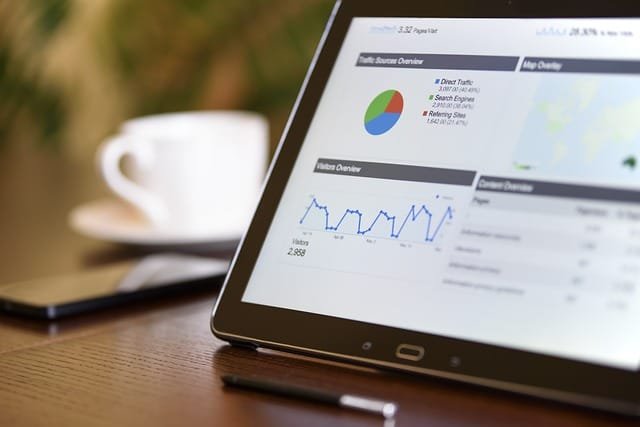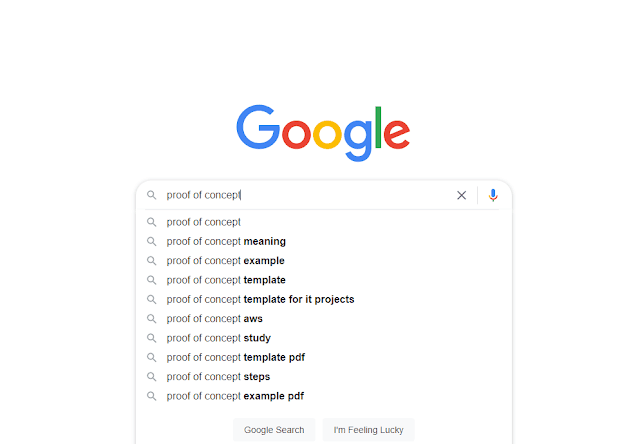Understanding Target Audiences
Why Audience Targeting Matters
Nailing your audience targeting is like knowing the secret handshake for a smooth ride in marketing town. It means you really get who you’re talking to, so you don’t sound like you’re calling Bob when you want Alice. Businesses that know their folks can hit the right buttons with messages that make them go, “Yeah, that’s me!” They’re usually pegged by things like age, habits, and what makes them open their wallets. Now, that’s without getting all creepy about it.
Did you know 71% of people want companies to get personal? And, boy, do they get ticked off—76% start fuming when it feels like you’re shouting at everyone but them. Yeah, folks aren’t playing when it comes to personalized messages. These stats scream the importance of knowing who you’re dealing with and playing nice (LeadsBridge Blog). Plus, on another front, 68% expect every chat with a company to feel personal. Cracking that code isn’t easy, though, without a good handle on your audience (Harvard Business School Online).
Here’s a cheat sheet on why hitting the bullseye with audience targeting is a biggie:
| Statistic | Percentage |
|---|---|
| Folks who want you to know them | 71% |
| People who get frustrated without it | 76% |
| Those who want every interaction tailored | 68% |
Perks of Knowing Your Crowd
Getting to know your audience isn’t just about being the cool kid at the party. It packs some serious perks! One of them? Personalized perks up the wazoo. If you can really suss out what makes people tick, you’re looking at a revenue uptick of a mind-bending 760% through bespoke marketing moves (Harvard Business School Online).
Moreover, 82% of marketers think having bang-on customer intel is the bomb. But, yeah, gathering it can feel like trying to catch smoke. When you’ve got the goods on your crowd, crafting spot-on messages is a breeze (Harvard Business School Online).
Knowing your audience also helps you:
- Pick the right platform to woo your targets
- Cook up content that gets them chatting
- Build such strong bonds that while you’re at it, they’re already thinking, “I’m buying what they’re selling.”
In the end, zooming in on the right folks doesn’t just make ads efficient; it also wins hearts, trust, and keeps them coming back for more. Want to go even deeper into this whole audience thing? Check out our tips and tricks on target audience analysis and how to pin them down.
Data-Driven Targeting Strategies
Cracking the code on audience targeting is a top priority for the big bosses – the CEOs, business owners, and marketing maestros. Getting a grip on solid customer data and carving out precise groupings are your secret weapons to supercharge your marketing mojo.
Utilizing High-Quality Customer Data
You wanna build a skyscraper? Start with a solid foundation. And when it comes to audience targeting, that foundation is high-quality customer data. A survey by Harvard Business School Online found 82% of marketers are shouting from the rooftops about the importance of good data. Armed with it, businesses can hit the bullseye, aiming their marketing campaigns like digital Robin Hoods, directly at their perfect audience.
Data management wizards like Lotame and Neustar work their magic by analyzing your audience’s every online move. They tell you who’s who, what they’re into, and what gets them clicking. For marketing whizzes, this means crafting messages that don’t just land – they stick. With tech giants like Facebook and Google in your corner, this strategy is a game-changer for cutting through the noise.
| Type of Data | Why It Matters |
|---|---|
| Demographics | Pinpoints your audience’s age, gender, and zip code. |
| Interests | Taps into what your potential customers really care about. |
| Preferences | Shapes personalized marketing messages that resonate. |
| Online Behavior | Tracks consumer interaction with your digital content. |
Segmentation for Personalized Experiences
Segmentation – it’s like finding the right key for each lock. It’s about slicing and dicing your audience into smaller, sweet spot groups. This approach crafts experiences that speak to each segment’s heart. Businesses that nail this are the ones who understand who their dream customer is, whipping up marketing magic that hits home (WebFX).
Smart segmentation is also a savvy money-saver. By giving a miss to prospects that are a mismatch, rivals, or folks already on the customer list, businesses can zero in on the real MVPs. This head-on approach cranks up those conversion rates and stretches that marketing dollar further – all adding up to a sweet bump in ROI (ZoomInfo).
| Segmentation Criteria | What It Means |
|---|---|
| Demographic Segmentation | Tags audience by who they are – age, gender, income. |
| Geographic Segmentation | Divides audience by where they are – worldwide or local. |
| Behavioral Segmentation | Observes audience’s buying habits and online actions. |
| Psychographic Segmentation | Dives into values, mindsets, and daily vibes. |
Great data and clever segmentation are like peanut butter and jelly – made to go together. They let businesses dish out a specialized user experience, clinching their footing in the market. For more juicy tidbits, check out target audience segmentation to polish your marketing game and keep your audience coming back for more.
Effective Audience Targeting Tactics
To really hit the mark with audience targeting, you’d better get cozy with the nitty-gritty of psychographics and demographics, plus figure out how in-market audiences fit into your big picture.
Psychographics vs. Demographics
Demographics hand over the basics like age, gender, schooling, and money matters. They clue you in on the ‘who,’ which is super handy, but it won’t spill the beans on what makes your audience tick. That’s where psychographics enters the game, with its focus on values, interests, and what makes people do what they do. This angle’s getting a thumbs up for nailing those precise targeting goals. Take it from Tim Brown, a marketing whiz at Pacific Digital Group. He suggests that a deeper dive into psychographics can seriously sharpen your marketing chops (source: WordStream).
| Info Type | Examples | Goal |
|---|---|---|
| Demographics | Age, Gender, Income, Education | Pinpoint who you’re talking to |
| Psychographics | Values, Interests, Lifestyle, Motivations | Crack why they’re vibing the way they do |
By mixing demographics and psychographics, you craft campaigns that strike a chord with your audience from all angles. This sweet combo helps whip up custom marketing messages that not only speak to people but also boost engagement and conversions.
Leveraging In-Market Audiences
In-market audiences are those folks poking around, checking out stuff in a particular category. Using tools like Google Ads, businesses can buddy up with potential customers who are already eyeballing what they’ve got on offer (source: WordStream). This data-driven tactic is a goldmine for marketers eager to dish out messages that truly matter.
To juice up in-market targeting, you can link it with some clever marketing gear. Think of setting up a marketing network using tools like Facebook Conversions API, coupled with audience-focused strategies on platforms like Google Ads and Facebook Custom Audiences. Doing so can make your marketing sing to the right crowd (source: LeadsBridge Blog).
Honing in on in-market audiences is a savvy move for boosting pay-per-click (PPC) campaigns. It’s a shortcut to zero in on potential buyers during those crucial decision moments, all while dialing up the return on what you invest.
Nailing audience targeting, by spotlighting psychographics and tapping into in-market audiences, is key for smashing your marketing targets. Dive into more audience insights and advice throughout this piece.
Digital Platforms for Audience Targeting
In the marketing scene, digital hangouts like Google Ads and social media are like your cool gadgets—making audience targeting a breeze. They let businesses buddy up with folks who are just the right fit, thanks to their actions and vibes.
Google Ads’ In-Market Audiences
Google Ads has this neat trick called “in-market audiences.” It’s all about spotting folks who are right now hunting for what you’re offering. Google’s got the magic data wand to spot these potential buyers and helps you craft the right story that’ll speak to them.
Let’s break it down with a quick glance:
| Audience Traits | What’s the Deal? |
|---|---|
| Hunting down products | They’re likely the “buy-in” type |
| Way more interested | More clicks and maybe, just maybe, conversions |
| Ads with intent | They see what they want, your ads score better |
With some help from Google Analytics, you can keep tabs on your crowd, adjusting your tactics to get a better handle on what makes your audience tick.
Audience Targeting on Social Media
When it comes to social media, Facebook’s your friend in this arena. It offers options galore, letting businesses talk directly to people based on what they like, who they are, and what they do. That’s how you make your ads hit home.
| Targeting Choices | What’s the Scoop? |
|---|---|
| Interests | Hit up users based on their likes, hobbies, and guilty pleasures |
| Demographics | Zero in on age, gender, and where they call home |
| Behaviors | Catch their eye using past actions and habits |
Social media’s got these lively ad styles that grab attention. With handy insights like Facebook Insights, you can nurture these connections and turn conversations into conversions.
In the end, both Google Ads’ in-market magic and social media’s savvy targeting jazz up how businesses reach their crowd. They’re both pretty nifty tools for supercharging your marketing game. For the full scoop, check out our guide on target audience segmentation.
Customer Persona Development
Crafting customer personas is an essential step to ace audience targeting. It’s all about turning raw data into a clear picture of who your ideal customers are, helping you reach them right where they are.
Analyzing Customer Data
When it comes to tackling your data, it means diving into metrics to get a grip on both your current and potential fans. Tools like Google Analytics are your trusty sidekicks here, tracking how folks are landing on your site and what clicks with them. By laying eyes on these metrics, marketers get to know their crowd better, paving the way for strategies rooted in solid numbers.
| Data Points | Purpose |
|---|---|
| Demographic Information | Getting a handle on age, gender, income, and job roles. |
| User Behavior | Checking out how folks are interacting with your stuff. |
| Preferences | Figuring out what floats their boat and their shopping habits. |
| Geographic Location | Pinning down where they’re hanging out. |
This treasure trove of data is your golden ticket to group customers who vibe with your various goodies. Figuring out the headaches your product can solve makes your marketing smarter. For instance, pitching eco-friendly solutions to green-minded homeowners can really get the ball rolling on engagement and sales.
Creating Buyer Personas
Crafting buyer personas means turning your research into a vivid snapshot of your dream customer. This helps businesses see their market clearly, giving them insights into who’s really buying and how best to chat them up.
A solid buyer persona typically includes:
- Background Information: The scoop on their job, industry, and how long they’ve been at it.
- Demographics: Age, gender, cash flow, schooling, and where they call home.
- Goals and Challenges: What they’re aiming for and the hurdles they’re jumping over.
- Preferred Channels: Their go-to social spaces and how they like to be contacted.
- Buying Behavior: How they make decisions and what sways them to pull out their wallet.
Building customer personas helps businesses tweak their marketing efforts to suit each crowd just right. This kind of customization gives a big boost to any strategy, leading to higher interactions and faster ways to meet what your audience is aching for.
Tying together data analysis and persona crafting lets businesses polish their targeting game, ensuring their message hits the right note with the people they want to reach.
Reaching Audiences: How to Connect and Convert
Figuring out how to effectively connect with your crowd is key to winning the marketing game. Two major tricks up your sleeve are dishing out content people love and teaming up with influencers.
Serving Up Content That Clicks
Bringing valuable info to the table is your ace. If you’re talking about what your audience cares about, you’re onto something big. This could mean steering readers’ attention your way or turning up the heat on leads and sales (GRIN).
Here’s a quick rundown of content that hits home:
| Content Type | What It Does |
|---|---|
| Blog Posts | Give folks the lowdown on stuff they care about. |
| E-books | Dive deep into topics, prompting downloads and sign-ups. |
| Infographics | Make complex stuff simple and easy with visuals. |
| Social Media Posts | Chat it up casually, pushing shares and convo. |
| Video Content | Show off engaging tutorials or stories that stick with viewers. |
Mixing up your content game means speaking directly to different parts of your audience, keeping everyone happy.
Influencers: Your Secret Weapon
Getting influencers involved can seriously boost your efforts to reach the right folks. These partnerships tap straight into audiences that are already interested in what you’re selling (GRIN).
Here’s how influencers can help:
| Influencer Type | What You Get |
|---|---|
| Micro-Influencers | Smaller but fiercely loyal followers often mean better conversions. |
| Niche Experts | Experts in the field can cement trust and build your street cred. |
| Celebrity Influencers | Big names can shine the spotlight on your brand. |
Success hinges on tracking how your influencer pals are doing with metrics like engagement rates, reach, and conversion stats.
By weaving together smart content and influencer alliances, businesses can sharpen their audience strategies, boosting interaction and scoring better marketing wins. Curious about nailing down your target crowd? Check out our guides on target audience analysis and target audience segmentation.
Target Audience Insights
Knowing who you’re talking to is a game-changer for any marketing strategy. By snooping on social media numbers, businesses can get the lowdown on who’s really connecting with what they’re putting out there.
Social Media Analytics Benefits
Social media platforms have some nifty tools up their sleeves, breaking down audience gab and go. Digging into these can show which folks are vibing with your brand. This isn’t just about putting a face to the name; it’s about figuring out what corner of the market you’re playing in (Business.com).
Here’s the meat and potatoes of what you can get from social media analytics:
| Metric | What You Learn |
|---|---|
| Demographics | Who your peeps are: age, gender, where they kick it, what they’re into |
| Engagement Rates | How much users like your stuff, giving you a peek into their likes |
| Content Performance | Which posts are the life of the party, helping map out future tactics |
Getting a grip on these numbers means making smart moves when it comes to crafting content and getting your message across. This knowledge helps ensure you’re chatting with the folks you want to reach with messages that click.
Responding to Audience Needs
After you’ve zeroed in on your audience with some solid data, it’s go-time to make sure you’re scratching where they itch. Keeping people happy and coming back requires a little bit of extra effort that’s worth its weight in gold. A study says nearly 76% of people throw their hands up when they aren’t getting that personal touch (LeadsBridge Blog).
Here are a few moves to keep your audience sweet:
- Custom Messaging: Hit them with messages that speak their language and tap into what’s on their mind.
- Feedback Mechanisms: Try surveys or polls to get the real deal straight from the source. This fresh intel gives a leg up for future promotions and products.
- Content Relevance: Keep tabs on how your content’s playing, and tweak it to stay current with what your crowd is digging. Keeps ’em engaged and loyal.
By checking in on what your audience does and doesn’t like, businesses can tweak their game to make sure it hits home. Not only does this make your marketing zippier, but it also knits a tighter bond with your crowd. Want to get more into the nitty-gritty of fine-tuning your game? Check out our piece on target audience analysis.
Advanced Targeting Strategies
Out there in the wild world of audience targeting, you got your cold and warm folks. Each crowd’s got its own vibe and needs a custom game plan to reel ’em in and seal the deal.
Introducing Cold Audiences
Cold audiences? Think of them like strangers at a party—they don’t know your brand from Adam, but they’re sniffing around for what you offer. Introducing yourself in a way they’ll remember is key. Hit ’em up where they hang out, like on Facebook or Google, with ads that say, “Hey! You might just need us!” This strategy helps pave the way for lasting bonds—and let’s be honest, bigger sales. It’s all about crafting catchy ads that match what they’re curious about.
| Audience Type | Who They Are | How to Hook ‘Em |
|---|---|---|
| Cold Audience | Folks who’ve never heard of your business | Slick ads on social media and search engines, juicy content marketing |
The trick is to catch their eye with stuff that speaks to them right where they are. You’re aiming for that double-take—don’t just stop ’em, keep ’em browsing.
Nurturing Warm Audiences
Warm audiences are those familiar faces who’ve checked out your place but haven’t pulled out the credit card yet. These are your almost-customers, and they need a nudge more personal than a poke on Facebook. Think of personalized campaigns like a warm hug that reminds them of what they liked about you in the first place.
| Audience Type | Who They Are | How to Keep ‘Em Interested |
|---|---|---|
| Warm Audience | People who know the biz but aren’t buyers yet | Custom-tailored campaigns, retargeting ads with Facebook Pixel magic |
When nurturing these warm leads, dive into content that hits home for them. Use tools that tie everything together, making your marketing tighter than a grandma’s hug. Platforms like Facebook Conversions API and Google Ads help you craft those “just for you” messages across multiple channels.
So, cracking the code on cold vs. warm can flip the script on your sales. Knowing how to grab both by the horns means higher conversion rates and stronger ties with your audience. Want to dig deeper? Check out how to define target audience, target audience analysis, and target audience segmentation strategies.





















